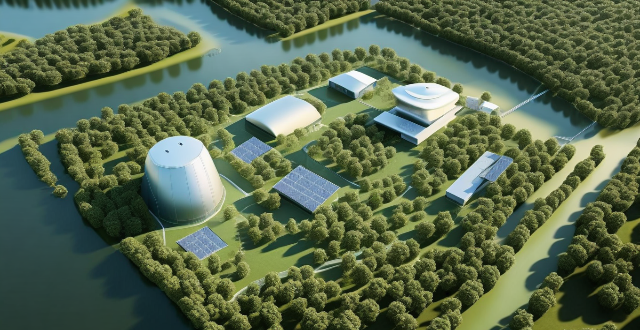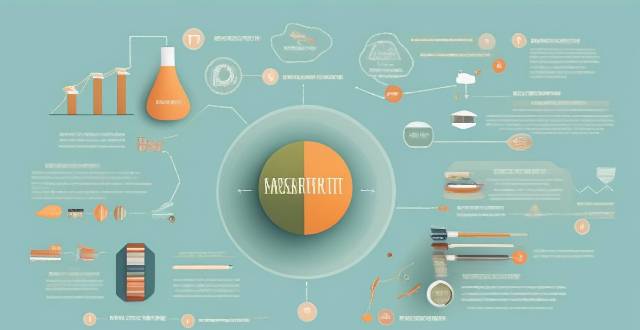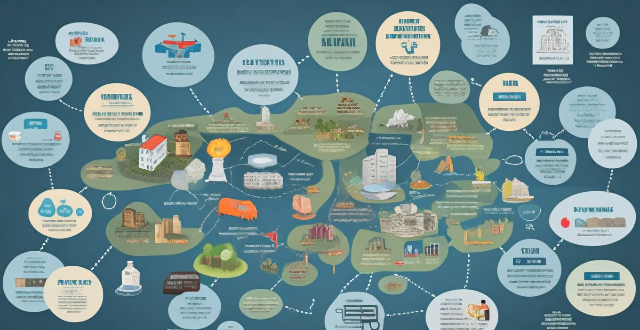Tele Technological

How do communication satellites impact the field of telecommunications ?
Communication satellites have revolutionized telecommunications by providing global connectivity, increasing bandwidth, and improving reliability. They allow for communication across vast distances, connecting remote areas with the rest of the world and providing access to telecom services in regions lacking terrestrial infrastructure. Modern satellite systems offer high data rates for faster internet speeds and better voice/video transmissions, supporting multiple services like voice, data, and video conferencing. Satellites also enhance reliability and redundancy as critical backups during disasters and emergencies, creating diverse communication pathways. With rapid deployment capabilities, satellites are ideal for temporary situations like military operations or emergency responses and enable mobile applications. Economically, advancing technology reduces costs, opens new markets, and fosters job creation. Technological advancements include improved modulation techniques and antenna designs for better performance. Environmental considerations involve space debris mitigation and energy efficiency. Overall, satellites significantly impact telecommunications by extending reach, increasing capacity, ensuring reliability, offering flexibility, driving economic growth, and fostering technological advancements while considering environmental implications.

What are the benefits of the Clean Energy Revolution ?
The Clean Energy Revolution is a significant transformation that brings numerous benefits, including a healthier environment and population, economic growth and sustainability, enhanced energy security and efficiency, and innovation and technological progress. It reduces pollution and improves public health, creates jobs and opportunities, makes energy more secure and efficient, and fosters international cooperation and technological advancements. The revolution promises a more sustainable and equitable world for humanity to thrive in without compromising the planet's health.

What technological advancements have been discussed or promoted at climate summits ?
Technological advancements discussed at climate summits include renewable energy technologies (solar, wind, hydroelectric power), energy efficiency and conservation measures (building design, transportation, industry), carbon capture and storage (CCS), nuclear power, agroecology and sustainable land use practices (regenerative agriculture, forest management, sustainable fisheries), and green finance and investment (green bonds, green banks, climate risk assessment). These strategies aim to mitigate the effects of climate change by reducing greenhouse gas emissions and promoting sustainable development.

What are the latest technological innovations in the field of artificial intelligence ?
Artificial Intelligence (AI) is a rapidly evolving field that has seen significant advancements in recent years. The latest technological innovations include Natural Language Processing (NLP), Computer Vision, and Machine Learning. NLP focuses on enabling machines to understand and generate human language, while Computer Vision enables machines to interpret and analyze visual information. Machine Learning is a subset of AI that involves training algorithms to learn from data without being explicitly programmed. These innovations have the potential to transform various industries and improve our daily lives.

What are the main challenges in achieving a successful energy transition ?
The energy transition to renewable sources faces numerous challenges that encompass technological, economic, policy, social, infrastructure, environmental, geopolitical, and natural limitations. Addressing these obstacles requires a comprehensive approach involving technological innovation, economic incentives, policy support, cultural shifts, international cooperation, and consideration of environmental impacts and resource availability.

What technological advancements are necessary for the successful establishment of a lunar base ?
Establishing a lunar base requires technological advancements in areas such as life support, energy production, habitat construction, transportation, communication, health monitoring, and extravehicular activity. Innovations like advanced recycling systems, hydroponics for food production, solar power, nuclear energy, 3D printing of habitat components, radiation shielding, rugged vehicles, high-speed internet, automation, telemedicine, improved spacesuits, and specialized tools are essential for creating a sustainable and efficient lunar habitat.

How has financial regulation evolved over time ?
The evolution of financial regulation has been marked by significant changes in response to economic crises, technological advancements, and shifts in political ideologies. From the laissez-faire approach of early days to the rise of regulatory frameworks during the Great Depression, through the deregulation era of the late 20th century, and the renewed emphasis on regulation following the Global Financial Crisis, financial regulation has adapted to maintain stability and promote growth within the financial sector. The digital age presents new challenges, requiring regulators to adapt existing frameworks to accommodate technological innovations while ensuring consumer protection and systemic stability.

How effective are international climate commitments in reducing carbon emissions ?
International climate commitments, such as those made under the Paris Agreement, aim to reduce carbon emissions and limit global temperature rise. These commitments vary in ambition and implementation can be challenging due to political, economic, and technological factors. Monitoring and verification mechanisms exist but have flaws. Many commitments focus on long-term goals, making immediate impact assessment difficult. However, they can inspire policy changes, technological innovation, and raise public awareness, leading to indirect emissions reductions. The effectiveness of these commitments depends on a range of factors including political will, economic conditions, technological advancement, and societal engagement.

What are some examples of recent technological advancements in renewable energy sources ?
Renewable energy sources have been gaining momentum in recent years due to the increasing awareness of climate change and the need for sustainable alternatives to fossil fuels. Here are some examples of recent technological advancements in this field: - Solar Energy: Perovskite solar cells, bifacial solar panels, concentrated solar power (CSP) systems with efficient heat transfer fluids and storage systems. - Wind Energy: Floating wind turbines designed for deep waters, smart grid integration with improved forecasting techniques, demand response programs, and energy storage solutions. - Hydropower: Run-of-river systems that minimize environmental impact by utilizing natural river flow, low head hydropower installed in existing water infrastructure without significant modifications. - Geothermal Energy: Enhanced geothermal systems (EGS) with improved drilling techniques and efficient heat exchangers, low-temperature geothermal heat pumps harnessing warmth from Earth's surface even in colder climates. - Biomass Energy: Anaerobic digestion process breaking down organic matter to produce biogas for electricity generation or as a natural gas substitute, torrefaction converting biomass into coal-like substance called biocoal with higher energy density and potential applications in replacing coal in power plants and industrial processes.

When will 5G networks be available globally ?
The availability of 5G networks globally depends on technological development, regulatory frameworks, and infrastructure deployment. Technological advancements such as millimeter-wave spectrum and advanced antenna designs have paved the way for faster data speeds and higher capacity in wireless networks. Regulatory frameworks are crucial in determining the availability of 5G networks globally, as governments need to establish policies and standards that support its deployment while ensuring consumer safety. Infrastructure deployment is another critical factor, as building out the necessary network infrastructure requires significant investment and planning. Despite these challenges, several trends suggest that 5G networks will become more widely available over the next few years, including rapid adoption, increasing investment, and government support.

What is the future outlook for electric vehicle adoption globally ?
The future outlook for electric vehicle adoption globally is promising, driven by government policies, technological advancements, and changing consumer attitudes towards sustainability. Governments are offering tax credits, setting emission standards, and investing in charging infrastructure to encourage EV adoption. Technological advancements such as improved battery technology, autonomous driving, and smart grid integration are also driving adoption. Consumer attitudes towards sustainability and environmental concerns are contributing to the growth of EV adoption. However, challenges and barriers such as high upfront costs, lack of charging infrastructure, and range anxiety must be addressed to achieve widespread adoption.

How can carbon capture technology be scaled up to address global climate change ?
The article discusses the challenges and strategies associated with scaling up carbon capture technology (CCT) to mitigate global climate change. The challenges include high costs, technological limitations, infrastructure and logistics issues, and regulatory and legal frameworks. To overcome these challenges, strategies such as policy and economic incentives, technological innovation, infrastructure development, public-private partnerships, and international cooperation are proposed. Scaling up CCT is crucial in reducing atmospheric CO2 levels and combating global climate change.

How has the private equity industry evolved over time ?
The private equity (PE) industry has undergone significant changes since its inception, evolving from small and mid-sized business investments to larger companies and more complex transactions. The industry has diversified into various sub-sectors like venture capital and distressed investing, allowing firms to specialize in specific areas. Technological advancements have played a crucial role in shaping the PE industry, improving investment decision-making processes. Regulatory changes have also influenced the evolution of the industry, promoting transparency, fairness, and accountability. Looking ahead, the PE industry is likely to continue evolving as it adapts to changing market conditions, technological advancements, and regulatory environments.

What are the challenges to achieving sustainable consumption ?
The text discusses the various challenges to achieving sustainable consumption, including lack of awareness and education, economic barriers, cultural and social norms, infrastructure and accessibility issues, technological limitations, policy and regulatory challenges, business practices, and consumer behavior. It emphasizes the need for a multifaceted approach involving education, policy changes, technological advancements, and cultural shifts towards more sustainable consumption patterns to overcome these challenges and move towards a more sustainable future for all generations.

What are the key challenges in managing water resources sustainably ?
Managing water resources sustainably is a complex task that involves various challenges, including climate change, population growth and urbanization, pollution and degradation of water bodies, overexploitation and unsustainable use, inadequate governance and policy frameworks, economic and financial constraints, social and cultural factors, technological limitations, ecological considerations, and international water sharing. Addressing these challenges requires a combination of technological innovation, policy reform, public education, and international cooperation. Sustainable water management is not only about ensuring enough water for current needs but also about preserving this vital resource for future generations.

What are the challenges in enforcing international environmental laws related to climate change ?
Enforcing international environmental laws related to climate change faces challenges such as a lack of global leadership and coordination, inadequate legal frameworks, economic and developmental imbalances, scientific uncertainty and information gaps, socio-cultural factors, and technological and infrastructure limitations. These issues require cooperation among nations, stronger legal frameworks, balanced economic development, improved scientific understanding, cultural sensitivity, and technological advancement to overcome.

To what extent do technological advancements (like improved equipment and analytics) influence sports performance at the highest level ?
Technology has significantly impacted sports performance through improved equipment, advanced analytics, and enhanced training methods. Lightweight materials, aerodynamic designs, and customized gear have boosted athlete performance. Safety measures and recovery tools have minimized injuries and accelerated healing. Smart devices and simulation tools aid efficient training. Advanced analytics aid in performance tracking, strategy development, and team management. However, these advancements may create disparities between teams with unequal access to technology. They also raise debates on skill versus technology's role in sports. Despite concerns, technology enhances fan engagement through interactive experiences and data visualization. As technology advances, governing bodies must ensure equitable access and maintain fair competition while embracing its role in shaping the future of sports.

How can I prevent my personal information from being used in telecommunications fraud ?
To protect your personal information from telecommunications fraud, follow these steps: be cautious with personal information, use strong passwords and two-factor authentication, keep software and devices updated, be wary of suspicious emails and links, and educate yourself about common scams. By taking these precautions, you can reduce the risk of falling victim to telecommunications fraud.

Can I report telecommunications fraud to any authority ?
Telecommunications fraud is a serious issue that can have significant financial and personal consequences for victims. It is important to know where and how to report such incidents to ensure that appropriate action is taken. In this article, we will explore the various authorities to which you can report telecommunications fraud. The Federal Communications Commission (FCC) is the primary agency responsible for regulating interstate and international communications by radio, television, wire, satellite, and cable in the United States. The FBI is responsible for investigating federal crimes, including telecommunications fraud. Each state has an attorney general who is responsible for protecting consumers within their jurisdiction. Local law enforcement agencies also have the authority to investigate complaints and work with other agencies to pursue legal action against those responsible for fraudulent activities.

How can I protect myself from telecommunications fraud ?
Telecommunications fraud is a serious issue that can have devastating consequences for victims. It involves unauthorized access to personal and financial information through various communication channels such as phone calls, text messages, emails, and social media platforms. To protect yourself from telecommunications fraud, you should be wary of unsolicited calls and messages, use strong passwords and two-factor authentication, keep your devices and software up-to-date, be cautious with financial transactions, educate yourself and stay informed about the latest scams and fraudulent activities. By following these tips, you can significantly reduce your risk of falling victim to telecommunications fraud.

How can I educate my family about telecommunications fraud ?
Telecommunications fraud is a serious issue that can have devastating consequences for individuals and families. To protect themselves from becoming victims, it's important to educate loved ones about the risks and ways to avoid them. Here are some steps to follow: Understanding Telecommunications Fraud: Make sure everyone understands what telecommunications fraud entails and how it works. This includes phishing scams, vishing attacks, smishing schemes, and tech support scams. Recognizing Red Flags: Educate your family on the common signs of telecommunications fraud, such as urgency, unexpected requests, too good to be true offers, threats or intimidation. Prevention Tips: Share prevention tips with your family to help them avoid falling prey to scams. These include staying informed, verifying sources, securing devices, using anti-fraud tools, being cautious online, limiting personal exposure, and reporting suspected fraud. Action Plan: Create an action plan for your family in case they encounter a potential fraud attempt. This includes stopping and thinking before acting impulsively, consulting family members for a second opinion, contacting authorities if convinced it's a scam, and documenting everything related to the suspected fraud for future reference.

How do biosafety policies differ across countries and regions ?
Biosafety policies are crucial for protecting public health and the environment from potential risks associated with biotechnology. These policies vary significantly across countries and regions due to differences in regulatory frameworks, cultural values, economic resources, and technological advancements. The United States has a well-established regulatory framework for biosafety, while the European Union has a strict regulatory framework. In Asia, China and India have relatively new biosafety laws. Cultural values also play a significant role in shaping biosafety policies across countries and regions. Economic resources can impact the implementation and enforcement of biosafety policies, and technological advancements can introduce new challenges and opportunities.

How effective is solar power as an alternative energy source ?
Solar power is a sustainable and environmentally friendly energy source with decreasing costs and increasing efficiency due to technological advancements.

What is the future of carbon credit systems ?
The future of carbon credit systems is uncertain and depends on various factors such as policy decisions, technological advancements, public opinion, and market dynamics. Governments play a crucial role in shaping the future of these systems through regulations and enforcement. Technological innovations can both increase and decrease the value of carbon credits. Public opinion can drive demand for carbon credits, while market dynamics will shape the industry's evolution. Despite challenges, there are opportunities for growth and improvement in this important area of environmental protection.

How can the energy sector reduce its water footprint through innovations in technology ?
The energy sector's substantial water consumption is a concern for sustainable development. Technological innovations, such as efficient cooling systems, advanced water treatment, renewable energy integration, smart water management, waste heat recovery, and improved desalination methods, can help reduce the sector's water footprint. These innovations offer benefits like resource conservation, cost efficiency, and reduced environmental impact, ultimately contributing to global water security.

What is the future of cryptocurrency investments ?
The future of cryptocurrency investments is uncertain and depends on various factors such as regulatory changes, technological advancements, market trends, and investor sentiment. Regulatory changes could either limit the growth of the industry or attract more investors. Technological advancements could lead to increased adoption or cause a decline in prices. Market trends like acceptance by companies and institutional investors could drive up demand and prices. Investor sentiment plays a crucial role in determining the future of cryptocurrency investments. It is important to do research and consult with a financial advisor before making any investment decisions.

How do climate policies vary between developed and developing countries ?
This article compares the climate policies of developed and developing countries, highlighting differences in economic resources, technological capabilities, and political priorities. Developed countries have larger economies and more financial resources to invest in climate change initiatives, while developing countries face challenges due to limited financial resources. Technological capabilities also differ significantly, with developed countries possessing advanced technologies for renewable energy and emission reduction strategies, while developing countries lack such infrastructure. Political priorities also vary, with developed countries often prioritizing climate action, while developing countries may prioritize other pressing issues. The article concludes that international cooperation and support mechanisms are crucial for bridging these gaps and fostering a global response to climate change that is both equitable and effective.

How efficient is wind energy compared to other renewable sources ?
The efficiency of wind energy is influenced by factors such as capacity factor, technological advancements, and site specificity. Compared to other renewable sources like solar, hydropower, geothermal, biomass, and tidal/wave energy, wind energy has a relatively high capacity factor ranging from 35% to 45%. Technological improvements have increased the efficiency of wind turbines over the years, making them more productive. However, the efficiency of wind farms is highly dependent on the location, with optimal sites achieving higher efficiency rates. In conclusion, wind energy compares favorably to other renewable sources in terms of efficiency, but the choice between different renewable energies often depends on local conditions, economic factors, and technological advancements.

How has technology advancement affected the development and use of DC brushed motors in recent years ?
The advancement in technology has significantly influenced the development and use of Direct Current (DC) brushed motors over the years. This article will discuss how technological progress has affected the design, performance, and application of DC brushed motors.

How does network coverage vary between different mobile carriers ?
Network coverage among mobile carriers varies due to differences in infrastructure investments, partnerships and roaming agreements, and technological advancements. Carriers that invest heavily in building and maintaining their network infrastructure are likely to have more extensive coverage than those with limited resources. Partnerships and roaming agreements allow customers to use the partner network's services in areas where the original carrier does not have coverage. Technological advancements like 5G promise faster speeds and better coverage, especially in densely populated urban areas. The geographic coverage of mobile carriers varies significantly, with some carriers focusing on providing extensive coverage across large regions while others prioritize dense urban areas. Speed and capacity also differ among carriers, with those having more advanced infrastructure and technologies typically offering higher speeds and greater capacity. Quality of service is another factor that varies among mobile carriers, including aspects such as call clarity, connection reliability, and data transfer rates. Customers should consider these factors when choosing a carrier to ensure reliable and efficient mobile connectivity.